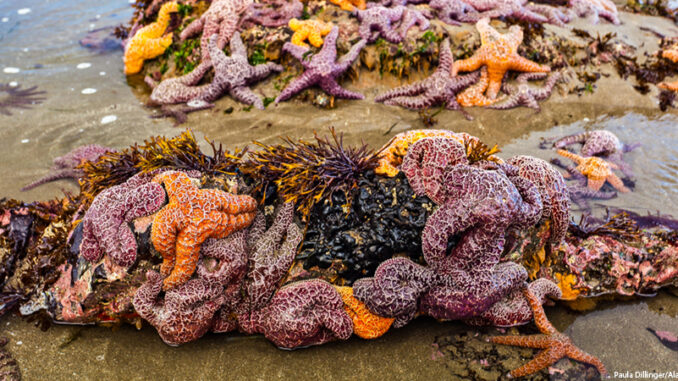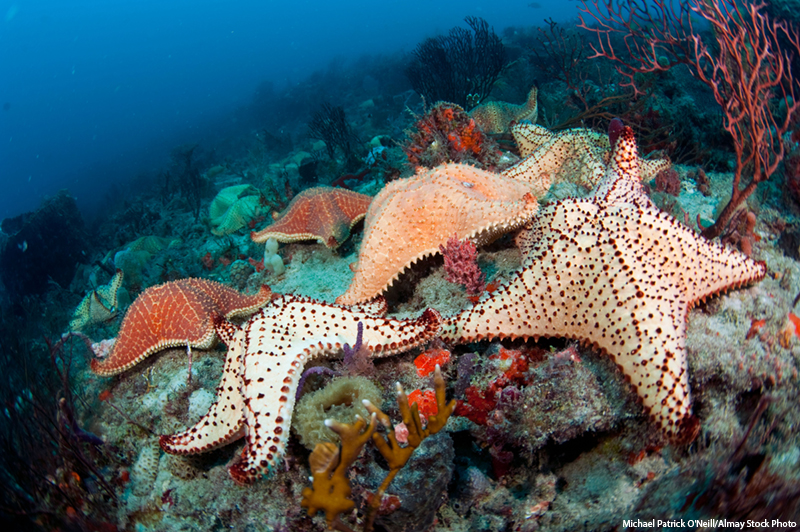
Did you know that more than five billion starfish, actually called sea stars, have died in the Pacific Ocean off the coast of North America in the past ten years? For a decade, the cause of this die-off remained a mystery–until now. Here, btw looks at the disease that caused the problem, its devastating impact on the ocean’s ecosystem, and the new hope scientists have for the sea stars’ future.
What Happened?
In 2013, a mysterious disease called Sea Star Wasting Disease (SSWD) began killing off sea stars along the coast of North America. The disease causes the sea stars to become lethargic. Meanwhile, their arms start to grow white lesions and then begin to twist and fall off, giving the sea star the appearance of “melting.” The disease progresses very quickly, and the animal usually dies within a few days. Since 2013, more than twenty species have been seriously impacted by SSWD. The hardest hit has been the iconic sunflower sea star, the largest sea stars in the world. Ordinarily, they can grow to the size of a bicycle tire and have up to 24 arms. Sunflower sea stars lost about 90 percent of their population in the first five years of the epidemic. This was one of the largest die-offs of a marine species ever recorded.
A Mysterious Disease
At first, scientists thought the wasting disease might be caused by a virus, but they were wrong. They also thought it might be related to climate change and rising ocean temperatures, but that was incorrect as well. But in August 2025, a group of scientists discovered that the disease is actually caused by the bacteria Vibrio pectenicida, which has also infected coral and shellfish in the past.

To figure this out, the scientists collected infected sea stars from the wild and took a sample of their bodily fluid. These tests revealed the presence of the pectenicida bacteria in the sick sea stars. They then injected the bacteria into healthy sea stars. Those previously healthy sea stars also began exhibiting symptoms of the disease, which provided scientists with the proof they needed.
Why It Matters
A marine die-out of this size is tragic. But the death of so many sea stars also impacts the ecology of the entire ocean. For example, sea stars prey on sea urchins and help keep their numbers under control. Without sea stars, the sea urchin population has exploded. The sea urchins feed on kelp, and their overpopulation means that entire kelp forests have been wiped out. Kelp forests are important to many sea animals, such as fish, sea otters, and seals, because they provide food and habitat. Without sea stars, the whole oceanis altered
Hope for the Future?
Figuring out the cause of SSWD is important, because now scientists can test living sea stars to see which ones are still healthy and which ones need some intervention. It also gives them more information about related bacteria that harms other species as well, such as oysters, salmon, and sea scallops. (Interestingly, a similar bacterium also causes the disease cholera in humans.) Ultimately, the goal is to transplant healthy sea stars to areas that have lost almost all of theirs. It will also now be possible for scientists to begin trying to develop a treatment for SSWD.
